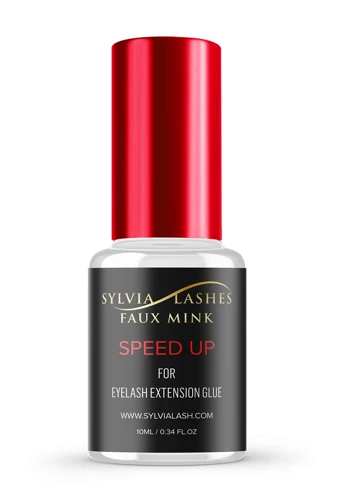Super glue is a household essential, renowned for its powerful bonding capabilities. Whether you’re a DIY enthusiast or simply need to make a quick fix, understanding the fundamentals of super glue is crucial for efficient and effective use.
History and Composition
The origins of super glue date back to the 1940s, when scientists stumbled upon a formulation that would revolutionize adhesive technology. Composed mainly of a substance called cyanoacrylate, super glue is known for its rapid bonding ability. This clear, strong polymer forms a tight bond almost instantly upon exposure to air and moisture, making it a go-to solution for countless repair jobs.
Super Glue Strength and Versatility
What sets super glue apart is its formidable strength and versatility. Able to adhere to a wide range of materials including plastic, metal, and wood, its uses are virtually limitless. The secret lies in its ability to form a rigid chain of molecules upon drying, creating a durable and long-lasting bond that can withstand significant stress and strain.
Super Glue Drying Time
When working with super glue, one of the most pressing questions is how long it takes to dry. The answer is not as straightforward as it might seem, as several factors can influence the drying process.
Cure Time for Super Glue
The cure time for super glue, the period it takes to reach its maximum strength, can range from a few seconds to several hours, depending on the product and conditions. While a bond may feel secure almost immediately, a full cure allowing for maximum bond strength typically requires a longer period.
Super Glue Set Time Factors
Several factors can influence the super glue set time. These include the types of surfaces being bonded, the amount of adhesive used, and the humidity level in the environment. Higher humidity can actually speed up the drying process, while cooler temperatures and less porous surfaces may slow it down.
Super Glue Drying Conditions
Optimal super glue drying conditions generally involve room temperature environments with moderate humidity. Deviations from these conditions can extend drying times or weaken the bond. Always refer to the manufacturer’s instructions for the best results.
Bonding with Super Glue
Bonding with super glue is a straightforward process, but attention to detail can make the difference between a perfect seal and a failed bond. Ensuring a successful bond means following a few simple rules.
Super Glue Application Guide
Starting with a clean and dry surface is imperative. Apply a small amount of adhesive to one surface, press together with the other surface, and hold firmly for the recommended set time. Excess glue can be wiped away with a dry cloth before it sets.
Quick Dry Adhesive Techniques
For those seeking a quick fix, quick dry adhesive options are available. These are specifically formulated for speed, setting in a matter of seconds. Even with these fast-acting glues, proper application is key to a strong bond.
Surface Preparation for Optimal Adhesion
Surface preparation is critical when bonding with super glue. Ensure that surfaces are clean, dry, and free from dust or oil. Roughening smooth surfaces with sandpaper can also increase adhesion by providing more area for the glue to bond.
How to Speed Up Super Glue Drying
While super glue naturally dries quickly, there are times when an even faster set is needed. Fortunately, there are several methods to accelerate the process.
Environmental Influences on Drying
Ambient conditions play a significant role in drying speed. Increase the temperature and humidity to shorten the drying time. However, be careful not to exceed the recommended conditions as this may compromise the bond.
Accelerating Agents for Faster Bonding
Manufacturers offer specific accelerating agents designed to hasten the curing process. These chemicals, usually sprayed or brushed onto the bonding surface, react with the glue to speed up drying without affecting the bond’s integrity.
Super Glue Drying Tips and Tricks
- Avoid using too much glue, which can extend drying time and weaken the bond.
- Clamp the bonded items together to maintain pressure and ensure a tight bond.
- Use a hairdryer on a low heat setting to gently warm the area and reduce set time.
Best Super Glue for Fast Drying
Selecting the best super glue for fast drying is essential for those in need of making quick repairs. The market offers a variety of options, each with its own set of features catering to different needs.
Comparing Different Quick Dry Adhesive Brands
When comparing quick dry adhesive brands, consider set time, bonding strength, and the materials you intend to bond. Some brands specialize in wood, while others are better suited for plastics or metals.
Product Recommendations for Rapid Repair Tasks
For rapid repair tasks, look for super glues labeled as “instant” or “quick set.” These often have a set time of a few seconds and cure completely in under a minute. Always check reviews and product specifications to ensure the adhesive meets your specific requirements.
FAQs on Super Glue Usage
Even with a comprehensive guide, users often have questions regarding the use of super glue. Addressing these can make the difference in ensuring successful applications.
Common Queries on Drying and Curing
Common queries often revolve around super glue drying time and how to tell when it’s fully cured. While touch-dry time is a good indicator, waiting for the full cure time as specified by the manufacturer is recommended for the strongest bond.
When working on various projects, understanding the drying times for different adhesives is crucial for a successful outcome. If you’re using super glue, you may be wondering about its drying time compared to other adhesives. For more specific types of glue, you can explore our detailed guides. Learn about the setting times for plastic adhesives in our article on how long for plastic glue to dry. If you’re dealing with car repairs, our guide on how long for windshield glue to dry can be incredibly useful. And for those quick beauty fixes, check out the information we’ve compiled on how long for nail glue to dry. Each type of glue has its unique properties and drying times, so it’s always best to be informed for your DIY needs.
Advanced Tips for Professional Applications
For professional applications, consider the working time – the period during which the glue can be manipulated. Use thin layers for faster setting and consider the use of accelerators for immediate bonds. Remember, practice makes perfect, and a thorough understanding of the product will ensure the best outcome.
Super glue remains an indispensable tool due to its quick dry adhesive properties and ease of use. With a proper understanding of super glue drying time, conditions, and application techniques, you can achieve strong, durable bonds in virtually no time at all.



